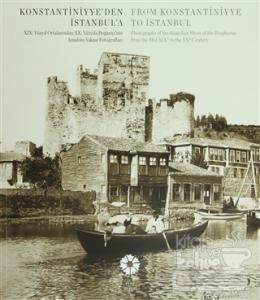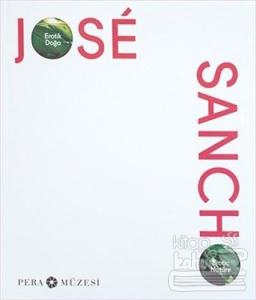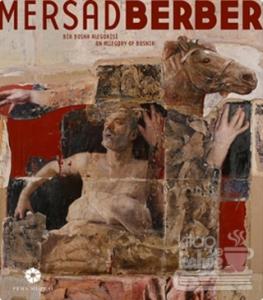
Üryan, çıplak , Nü : Türk Resminde Bir Modernleşme öyküsü sanatta portre, manzara, natürmort gibi belli başlı tülerden biri olan nü resmin modern Türk sanatındaki gelişim sürecine odaklanıyor. Sergide bir araya gelen resimlerin sunduğu zengin üslup çeşitliliği, çıplak insan bedeninin Türk ressamlar için bir konu olmaktan öte, biçimsel bir arayışın temeli olduğunu, başlı başına sanatsal bir ifade aracı olarak gündeme geldiğini gözler önüne seriyor. Öğrencilik döneminde sanatçıların önündeki en çetin sınav olan insan bedeni, üretim sürecinde bir yandan Batı sanatının modernist eğilimlerini izlerken öte yandan özgün bir dil geliştirmeye çalışan pek çok sanatçı için yeni arayışların ana esin kaynağı olarak karşımıza çıkıyor.
Sergi kataloğu, küratör Ahu Antmenin makalesi üzerinden Osmanlı'dan Cumhuriyet'e uzanan süreçte sanaçı kimliğinin oluşumunu, mahremle özdeşleştirilmiş kadın bedenine yönelik cinsellikten arınmış bir algı geliştirmenin güçlüklerini , modern kimlik algısında sanat ve nü arasında kurulan bağlantıları üşündüren bu resimler aracılığıyla , Türkiye'nin modernleşme öyküsünün ardındaki görsel serüveni hayal etmemize olanak tanıyor.
Bare, Naked, Nude: A Story of Modernization in Turkish Painting focuses on the evolution of nude painting as one of the foremost genres alongside portraiture, landscape, and still life in Turkish modern art. The rich diversity of styles represented in the paintings that come together in this exhibition reveal that the nude, far from being a subject for Turkish artists constitutes a means of expression fundamental in the search for form. The most challenging trial for artists in their student years, the human body emerges as a central source of inspiration in both the pursuit for modernist tendencies in Western art and in the efforts to articulate an individual artistic language.
The exhibition catalogue, through the essay of the curator, Ahu Antmen and the selected paintings offer us the possibility to envisage the visual adventure behind Turkey's story of modernization, providing an insight into the formation of artistic identity in the period extending from the Ottoman Empire to the Republic, the challenges of transforming the perception of the female body from a framework of privacy to that of a desexualized object and the connections between the art and the nude in the perception of a modern identity.
Üryan, çıplak , Nü : Türk Resminde Bir Modernleşme öyküsü sanatta portre, manzara, natürmort gibi belli başlı tülerden biri olan nü resmin modern Türk sanatındaki gelişim sürecine odaklanıyor. Sergide bir araya gelen resimlerin sunduğu zengin üslup çeşitliliği, çıplak insan bedeninin Türk ressamlar için bir konu olmaktan öte, biçimsel bir arayışın temeli olduğunu, başlı başına sanatsal bir ifade aracı olarak gündeme geldiğini gözler önüne seriyor. Öğrencilik döneminde sanatçıların önündeki en çetin sınav olan insan bedeni, üretim sürecinde bir yandan Batı sanatının modernist eğilimlerini izlerken öte yandan özgün bir dil geliştirmeye çalışan pek çok sanatçı için yeni arayışların ana esin kaynağı olarak karşımıza çıkıyor.
Sergi kataloğu, küratör Ahu Antmenin makalesi üzerinden Osmanlı'dan Cumhuriyet'e uzanan süreçte sanaçı kimliğinin oluşumunu, mahremle özdeşleştirilmiş kadın bedenine yönelik cinsellikten arınmış bir algı geliştirmenin güçlüklerini , modern kimlik algısında sanat ve nü arasında kurulan bağlantıları üşündüren bu resimler aracılığıyla , Türkiye'nin modernleşme öyküsünün ardındaki görsel serüveni hayal etmemize olanak tanıyor.
Bare, Naked, Nude: A Story of Modernization in Turkish Painting focuses on the evolution of nude painting as one of the foremost genres alongside portraiture, landscape, and still life in Turkish modern art. The rich diversity of styles represented in the paintings that come together in this exhibition reveal that the nude, far from being a subject for Turkish artists constitutes a means of expression fundamental in the search for form. The most challenging trial for artists in their student years, the human body emerges as a central source of inspiration in both the pursuit for modernist tendencies in Western art and in the efforts to articulate an individual artistic language.
The exhibition catalogue, through the essay of the curator, Ahu Antmen and the selected paintings offer us the possibility to envisage the visual adventure behind Turkey's story of modernization, providing an insight into the formation of artistic identity in the period extending from the Ottoman Empire to the Republic, the challenges of transforming the perception of the female body from a framework of privacy to that of a desexualized object and the connections between the art and the nude in the perception of a modern identity.














